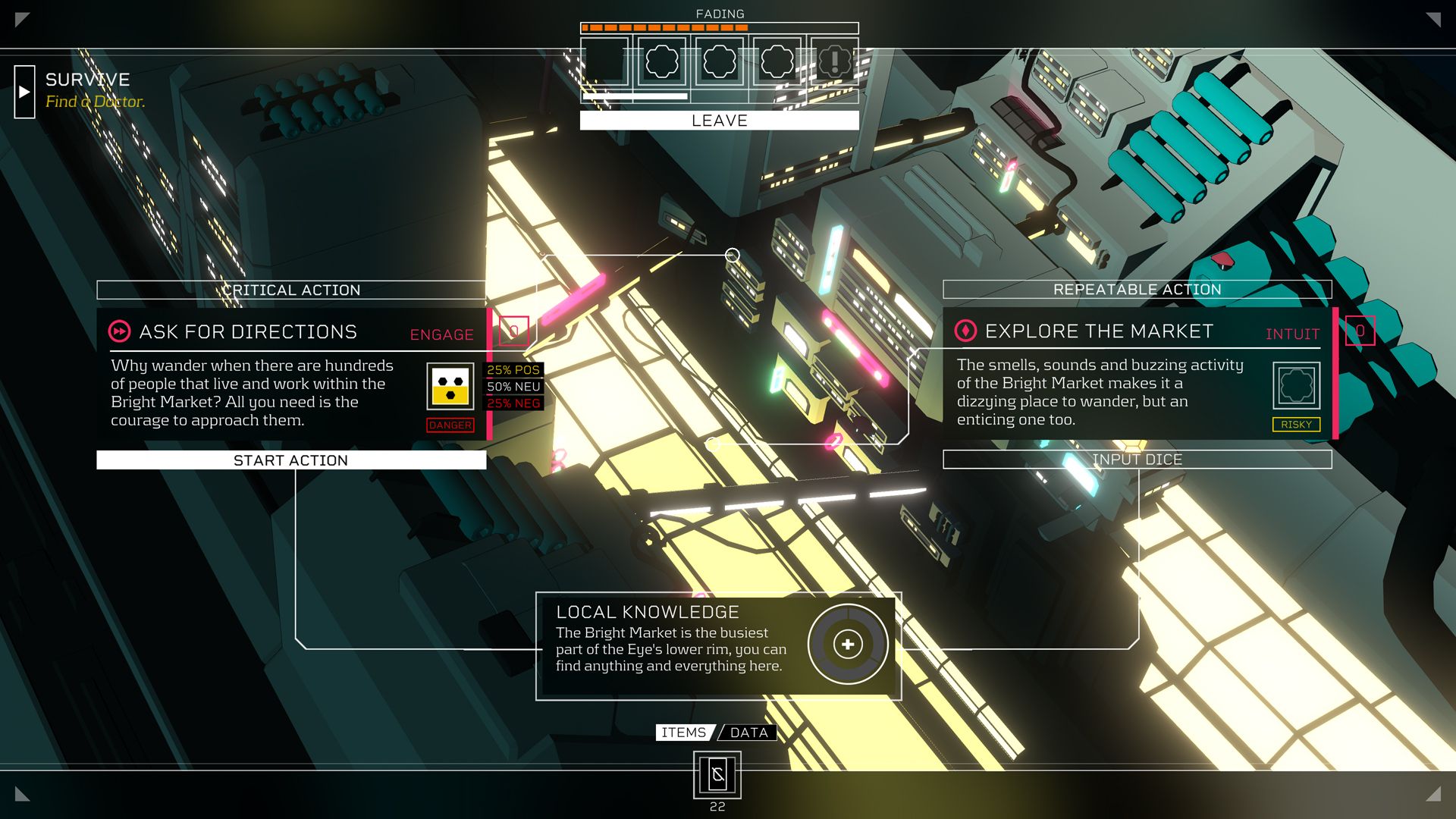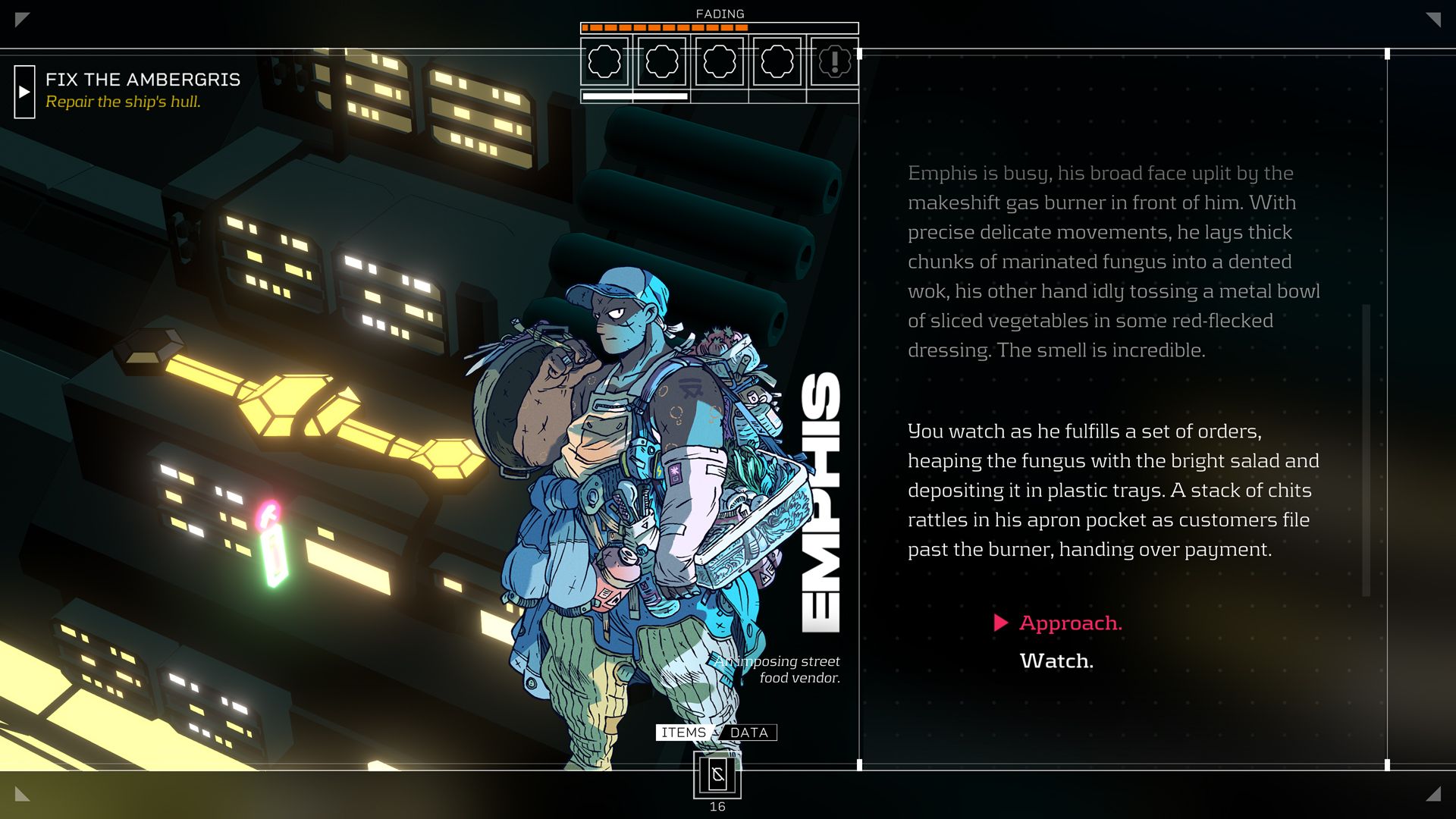Four decades removed from its genesis as noirish technoprophecy, cyberpunk has become less a subgenre or literary movement than visual shorthand—more a vague idea of rain-drenched cityscapes littered with glowing kanji than a unified approach to storytelling. But we live in a world where billionaires read the back cover of Snow Crash and decided dystopia is good, actually, and the most popular contemporary iteration of cyberpunk is a notoriously bug-ridden AAA video game. The hard questions asked by the genre’s initial cohort and their New Wave progenitors have been subsumed by the aesthetic, a Trojan Horse emptied of all its sharp knives. We are left with retrofuturist nostalgia, a version of the future that once felt vivid and exciting and ended up far more mundane than anyone imagined.
At its best, cyberpunk interrogates not only the ways technology shapes human lives and bodies, but how we might live as analog/digital hybrids in the rotting megastructure of unfettered capitalism. Even with all the slick, self-consciously futuristic trappings, the genre’s prescient horrors were always banal and corporate—so integrated into daily human life they become the air we breathe. The early cyberpunk canon had an admirable knack for dystopian bombast and startling—if oblique—foresight, but now that the -punk suffix has been reduced to meaninglessness, it’s time for new, nuanced takes on the core concerns those early works buried in neon.
In the roleplaying game Citizen Sleeper you, the player, find yourself on the space station Erlin’s Eye as a stowaway Sleeper—an artificial body occupied by a synthesized consciousness—on the run from the corporation that created you, owns you, and wants you back. You must navigate this new world in full survival mode, scraping for food, money, and the expensive stabilizer that keeps you running. You find work where you can get it, enter relationships with people who understand that you are not like them, run from hired goons and malicious software alike. While its world contains many time-sensitive subplots and tense situations, Sleeper is not an action-adventure but a nuanced, human story of perseverance—of building a life in a world that was not built for you. Computer hacking and corporate espionage certainly have their place here, but the game approaches these genre cornerstones as potential means to an end—stepping stones on the path to some kind of stability, even belonging. And cyberspace is only one facet of this world, your deteriorating body a constant concern tethering you to your physical environment. You may spend as much time tending bar, hauling junk, or farming mushrooms as you do raiding company servers.

While undeniably a cyberpunk work, this story draws less from the Gibson-Sterling canon than the knotty, skeptical futurism of proto-cyberpunk writers of the New Wave—Delany, Ballard, and Dick in particular—placing greater emphasis on evocative and interesting language, imagination, and character-driven plotting than, say, katanas and mirrorshades. Even compared to other recent text-heavy RPGs like Disco Elysium, Sleeper is pared down to the bare minimum, with little visual action besides a slow, bird’s-eye sweep across the Eye’s broad arc. The writing shines here, with deep, complicated characters that instantly feel lived-in and unique, bolstered by beautiful, subdued art by Guillaume Singelin. Even your antagonists feel real and nuanced, like the hired gun you may end up working with down the line, or the double-agent who helps you secure a stabilizer supply. The plotlines range from massive undertakings like the construction of a colony ship to the small stories of working class folks trying to eke out a life. Every character adds something to the overarching story, and by spending time with them you learn more and more about this place where diverse people have built a living, messy society in the ruins left by corporate collapse.
Citizen Sleeper’s gameplay operates on a simple, effective mechanic: a dice pool that fluctuates based on your health and represents your limited ability to effectively complete tasks. Each day you wake up with a limited amount of energy, and must decide how to spend it. Erlin’s Eye offers many opportunities to explore, build relationships, and move the story forward; while early on it can be tough to figure out how to best spend your time, once you get involved in a few plotlines you wake up every morning with a plan, priorities to attack. But the dice don’t always give you what you need, so you have to find other ways to spend that energy. It’s a mechanic that adds to the story, with whole narrative movements predicated on how you manage your resources and work within your limitations.

In this way Citizen Sleeper evokes the feeling of being a disabled person living in a complex urban environment, working gigs where they can find them and scraping together just enough resources to keep moving forward—capturing, as developer Gareth Damian Martin puts it, the “constant pressure, exposure to risk, the feeling that luck is the only thing that is keeping you with a roof over your head, or waking up in the morning and not knowing exactly how much you’re gonna have to give.” This can feel depressing or drab, but ultimately purposeful—the mundanity only adding to the game’s lush reality.
In his 1970 essay on writing convincing science fiction, “Living the Future: You Are What You Eat,” Gardner Doizois writes: “You are what you eat. And want, and do, and think, and fear, and dream. You live in an organic surround, an interlocking and interdependent gestalt made up of thousands of factors and combinations thereof: cultural, technological, biological, psychological, historical, environmental. For all practical purposes, you are that surround; if the things that make up that surround are altered, then you will alter with them.”
To this end, Sleeper reaches for and embodies a metaphor: fungus. Mycology pervades this narrative, not just as the station’s primary source of food, but as a cultural touchstone, a vital resource that can be made into soup, spirits, money, a future. Even this world’s cyberspace takes a mycological tack, bridging the gap between the organic communication of mushrooms and the synthetic Cloud’s digital denizens. This acceptance of non-human intelligences and turn toward the physical world helps Sleeper develop cyberpunk in a greener direction—the transformation of a synthetic world into a natural one, a tethering of the dissociated mind-ghost to a place, a body, an environment that must sustain it.

In embracing physical fragility as a mechanic and positioning cyberspace as an unruly set of tools, Sleeper eschews the macho console cowboy theatrics of its cyberpunk predecessors in favor of a densely layered cultural narrative, with the Eye a perfect container for its tight-knit web of connections and adversities. Citizen Sleeper pushes against the (ironically, inevitably) corporatized conventions of its genre, instead returning to its core themes and acerbic mode of cultural critique to advance a new, quietly radical vision of cyberpunk.
Twitter: @markplasma
IG: @markplasma
 Fiction: "So..." by Jake Williams
Fiction: "So..." by Jake Williams
 Poem: "The Bride Stripped Bare by Her Bachelors" by Juliette Sandoval
Poem: "The Bride Stripped Bare by Her Bachelors" by Juliette Sandoval